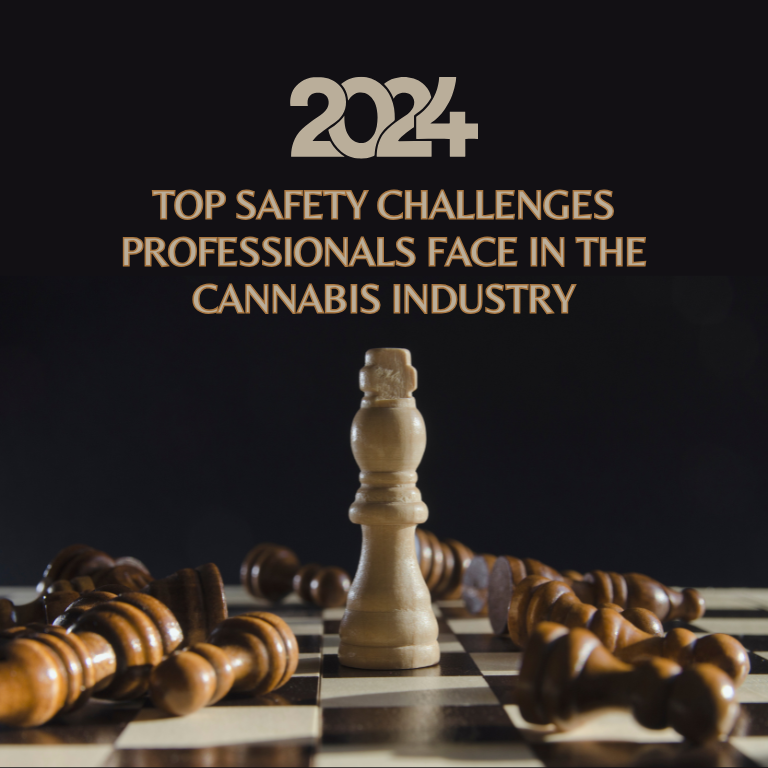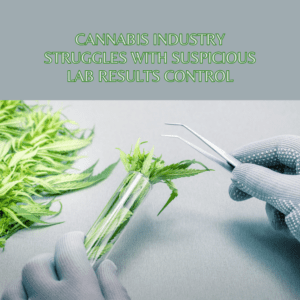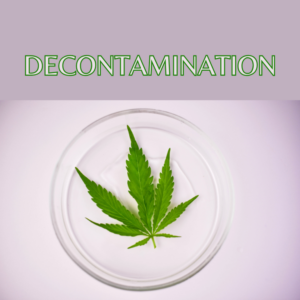Top Safety Challenges Professionals Face in 2024

Top Safety Challenges Professionals Face in the Cannabis Industry in 2024
The cannabis industry continues to evolve rapidly, with new markets emerging and regulatory frameworks adapting to this dynamic sector. However, with growth comes challenges, particularly in maintaining safety standards across cultivation, manufacturing, distribution, and retail operations.
In 2024, cannabis professionals are grappling with an array of safety concerns, ranging from workplace hazards to product quality issues. This article explores the top safety challenges facing the cannabis industry today and offers insights into how professionals can address these issues to protect workers, consumers, and businesses.
Workplace Safety in Cultivation Facilities
Cannabis cultivation involves significant physical labor, including planting, harvesting, and trimming. Workers are exposed to repetitive tasks, heavy lifting, and prolonged standing, which can lead to musculoskeletal injuries. Additionally, the use of ladders and machinery poses risks of falls and equipment-related accidents.
Pesticide and Chemical Exposure
Cultivation professionals often handle pesticides, fertilizers, and other chemicals. Improper handling or inadequate protective equipment can result in skin irritation, respiratory issues, and long-term health concerns.
Poor Ventilation and Air Quality
Indoor cultivation facilities require strict environmental controls, including humidity and temperature management. Inadequate ventilation can lead to poor air quality, exposing workers to mold spores and volatile organic compounds (VOCs) from fertilizers and pesticides.
Extraction and Manufacturing Risks
Cannabis extraction processes, particularly those involving solvents like butane or propane, pose significant fire and explosion risks. These hazards require specialized equipment and adherence to strict safety protocols, yet accidents continue to occur.
Chemical Exposure
Manufacturing workers may be exposed to hazardous chemicals used in extraction, cleaning, and product formulation. Without proper training and personal protective equipment (PPE), these exposures can lead to acute or chronic health issues.
Machine-Related Injuries
Operating extraction equipment and other manufacturing machinery comes with risks of cuts, burns, and other injuries. Improper training or equipment maintenance can exacerbate these dangers.
Product Contamination and Consumer Safety
Mold, mildew, bacteria, and yeast are common contaminants in cannabis products, particularly in improperly stored or processed flower. These contaminants pose health risks to consumers, especially those with compromised immune systems.
Heavy Metals and Pesticides
Cannabis plants are hyperaccumulators, meaning they absorb heavy metals like lead, arsenic, and cadmium from the soil. Residual pesticides can also contaminate products if not carefully managed. Both contaminants can cause serious health issues when consumed.
Inconsistent Potency Testing
Discrepancies in THC and CBD levels can lead to inaccurate labeling, undermining consumer trust and potentially causing adverse effects for users who rely on precise dosing.
Regulatory Compliance and Legal Risks
Cannabis professionals face the ongoing challenge of navigating a complex and ever-changing regulatory landscape. Compliance with health and safety standards varies by state, country, and product type, creating confusion and risk of violations.
Penalties for Non-Compliance
Failure to meet safety standards can result in fines, license suspensions, product recalls, or lawsuits. The financial and reputational damage from non-compliance can be devastating for businesses.
Retail and Consumer Interaction Risks
Cannabis dispensaries are frequent targets for theft due to the cash-heavy nature of the industry and the high value of cannabis products. Ensuring employee and customer safety requires robust security measures, including surveillance, access control, and trained personnel.
Uninformed Consumers
Educating consumers on safe usage practices, including proper dosing and storage, remains a challenge. Misuse of products can lead to adverse effects, such as accidental ingestion by children or overconsumption of edibles.
Transportation and Distribution Challenges
Transporting cannabis products involves risks such as theft, product tampering, and accidents. Drivers and distribution staff must adhere to stringent security protocols to ensure the safety of both the product and personnel.
Temperature Control for Perishable Products
Products like edibles and concentrates often require specific storage conditions during transport. Failure to maintain proper temperatures can compromise product quality and safety.
Employee Health and Well-Being
The fast-paced and high-pressure nature of the cannabis industry can lead to employee burnout. Long hours, job insecurity, and the stigma associated with cannabis work can take a toll on mental health.
Lack of Healthcare Benefits
Many cannabis companies, particularly smaller ones, struggle to provide comprehensive healthcare benefits to employees, leaving workers vulnerable to untreated injuries or illnesses.
Environmental Hazards
Proper disposal of cannabis waste, including plant material, solvents, and packaging, is critical to avoid environmental contamination. Improper disposal can lead to fines and environmental harm.
Water and Energy Consumption
Cannabis cultivation requires significant water and energy resources. Overuse or inefficient systems can deplete local resources and contribute to environmental degradation.
Lack of Industry-Wide Standards
The absence of standardized safety protocols across the industry makes it difficult for businesses to align their practices. This inconsistency increases the risk of accidents and non-compliance.
Varying Quality Standards
Differences in product safety testing requirements between states and countries create challenges for companies operating in multiple jurisdictions, potentially leading to unsafe products reaching the market.
Technology and Automation Risks
As cannabis businesses adopt technology for inventory management, customer transactions, and compliance tracking, they become targets for cyberattacks. Breaches can compromise sensitive customer data and company records.
Automation Hazards
While automation improves efficiency, it also introduces risks associated with machinery malfunctions or improper usage. Ensuring workers are trained to operate and maintain automated systems is essential.
Strategies for Overcoming Safety Challenges
Addressing these safety challenges requires a proactive approach from cannabis professionals. Here are some strategies to mitigate risks:
Comprehensive Training Programs
Invest in employee training to ensure workers understand safety protocols, proper equipment usage, and regulatory requirements.
Implementing Advanced Technologies
Leverage technology to improve safety, such as automated climate control systems for cultivation, blockchain for supply chain transparency, and AI-driven monitoring tools for compliance.
Strengthening Security Measures
Enhance security protocols for dispensaries, transportation, and digital systems to protect employees, consumers, and products.
Engaging with Regulators
Collaborate with regulatory agencies to stay informed about changes in laws and standards. Participating in industry associations can also help shape policies that promote safety and growth.
Promoting Employee Well-Being
Offer healthcare benefits, mental health resources, and a supportive work environment to prioritize employee safety and satisfaction.
The Role of Consumers in Safety
Consumers also play a role in promoting safety within the cannabis industry. By choosing products from reputable, compliant companies, they encourage businesses to maintain high standards. Consumers should also educate themselves about safe usage practices and proper storage of cannabis products.
As the cannabis industry grows in 2024, safety challenges remain a significant concern for professionals across the supply chain. Addressing these issues requires collaboration between businesses, regulators, and consumers to create a safer, more reliable cannabis market.
By prioritizing safety, the industry can protect its workers, ensure product quality, and build trust with consumers, paving the way for sustainable growth in the years ahead.
Stay informed about the latest cannabis industry developments with Cannabis Risk Manager.











